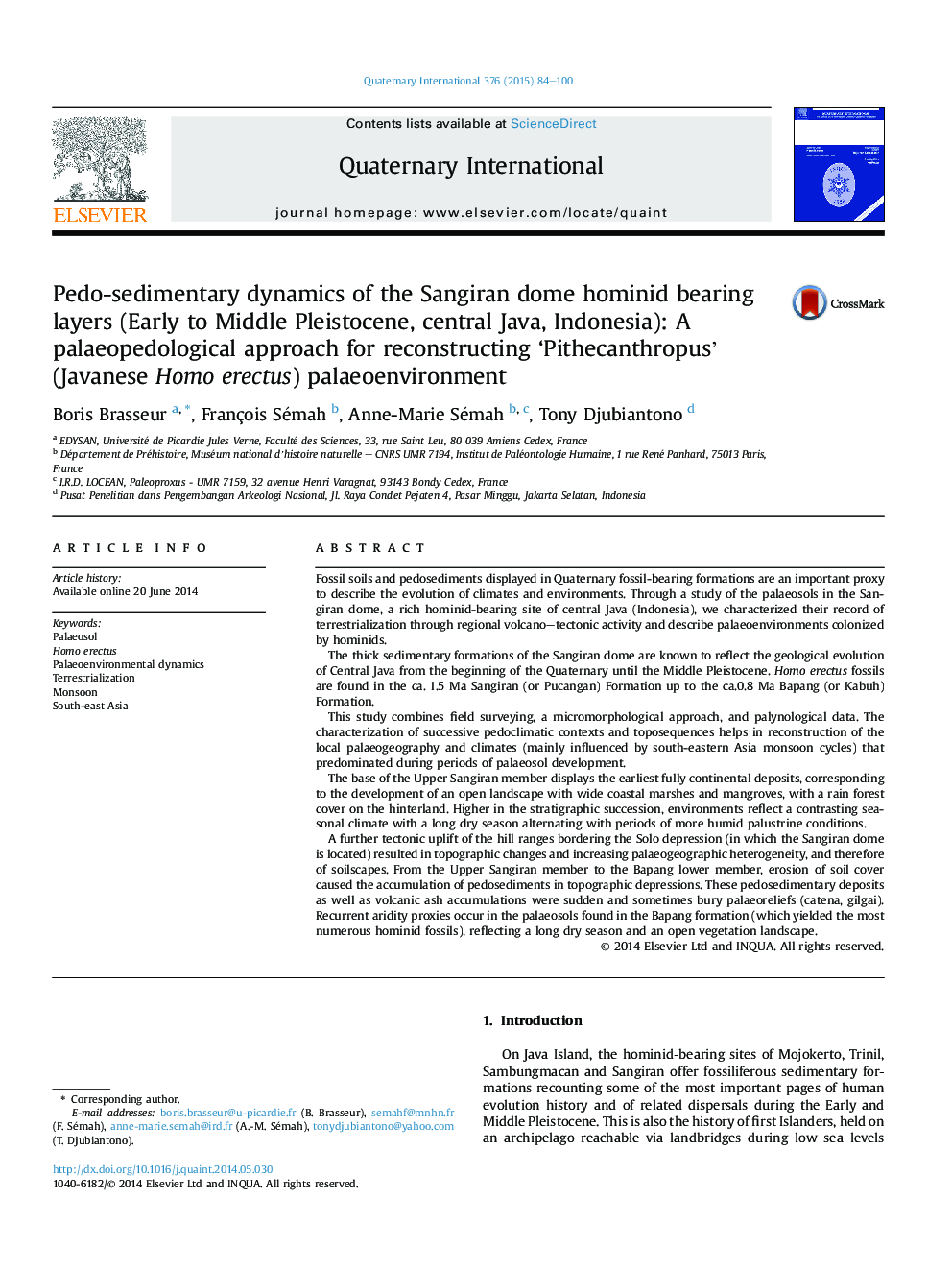| کد مقاله | کد نشریه | سال انتشار | مقاله انگلیسی | نسخه تمام متن |
|---|---|---|---|---|
| 1040669 | 1484121 | 2015 | 17 صفحه PDF | دانلود رایگان |

Fossil soils and pedosediments displayed in Quaternary fossil-bearing formations are an important proxy to describe the evolution of climates and environments. Through a study of the palaeosols in the Sangiran dome, a rich hominid-bearing site of central Java (Indonesia), we characterized their record of terrestrialization through regional volcano–tectonic activity and describe palaeoenvironments colonized by hominids.The thick sedimentary formations of the Sangiran dome are known to reflect the geological evolution of Central Java from the beginning of the Quaternary until the Middle Pleistocene. Homo erectus fossils are found in the ca. 1.5 Ma Sangiran (or Pucangan) Formation up to the ca.0.8 Ma Bapang (or Kabuh) Formation.This study combines field surveying, a micromorphological approach, and palynological data. The characterization of successive pedoclimatic contexts and toposequences helps in reconstruction of the local palaeogeography and climates (mainly influenced by south-eastern Asia monsoon cycles) that predominated during periods of palaeosol development.The base of the Upper Sangiran member displays the earliest fully continental deposits, corresponding to the development of an open landscape with wide coastal marshes and mangroves, with a rain forest cover on the hinterland. Higher in the stratigraphic succession, environments reflect a contrasting seasonal climate with a long dry season alternating with periods of more humid palustrine conditions.A further tectonic uplift of the hill ranges bordering the Solo depression (in which the Sangiran dome is located) resulted in topographic changes and increasing palaeogeographic heterogeneity, and therefore of soilscapes. From the Upper Sangiran member to the Bapang lower member, erosion of soil cover caused the accumulation of pedosediments in topographic depressions. These pedosedimentary deposits as well as volcanic ash accumulations were sudden and sometimes bury palaeoreliefs (catena, gilgai). Recurrent aridity proxies occur in the palaeosols found in the Bapang formation (which yielded the most numerous hominid fossils), reflecting a long dry season and an open vegetation landscape.
Journal: Quaternary International - Volume 376, 30 July 2015, Pages 84–100